Carrot Red Cor – a popular hybrid that fully meets farmers' expectations. It is in demand due to its adaptability to various conditions, high germination rate, and resistance to cracking.
Table of contents
Description of Carrot Red Cor
Seed germination rate is 55–70%.
The leaf rosette is sprawling. The leaves are long and dissected. The foliage is sturdy, dense, and dark green. The carrots are known for their excellent taste, juiciness, and pleasant aroma.
Red Cor is suitable for both spring and winter sowing.
Below is a photo of Carrot Red Cor.
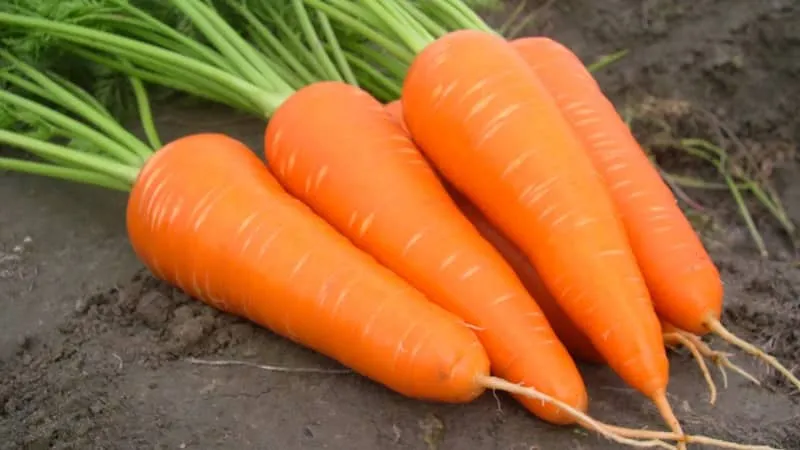
Origin and Development
The hybrid was developed by Dutch breeders. Red Cor belongs to the Chantenay type, which is popular among farmers in many countries. There is a theory that the original colour of the roots was dark purple. Through long-term selection, the taste improved, and the carrots acquired a bright orange hue.
Chemical Composition, Micronutrients, Vitamins, and Health Benefits
The roots are rich in carotenoids, vitamins, and carbohydrates. The seeds contain essential and fatty oils.
Vitamins:
- A – 0.2 mg;
- B1 – 0.05 mg;
- B2 – 0.06 mg;
- B5 – 0.32 mg;
- B6 – 0.11 mg;
- B9 – 0.08 mg;
- C – 5.2 mg;
- E – 0.05 mg;
- PP – 1.12 mg;
- H – 0.06 µg;
- K – 13 µg.
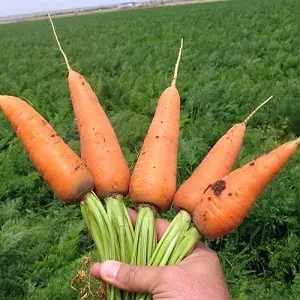 Macroelements:
Macroelements:
- Calcium – 25 mg;
- Magnesium – 37 mg;
- Sodium – 21 mg;
- Potassium – 185 mg;
- Phosphorus – 52 mg;
- Chlorine – 50 mg;
- Sulfur – 6 mg.
Microelements:
- Iron – 0.75 mg;
- Zinc – 0.38 mg;
- Iodine – 0.05 mg;
- Copper – 0.08 mg;
- Manganese – 0.22 mg;
- Boron – 0.02 mg;
- Fluorine – 0.05 mg;
- Vanadium – 0.08 mg;
- Aluminium – 0.03 mg.
Nutritional Value:
- Calories – 38 kcal;
- Protein – 1.4 g;
- Fat – 0.12 g;
- Carbohydrates – 7.3 g;
- Dietary fibre – 2.5 g;
- Water – 86 g;
- Starch – 0.2 g;
- Organic acids – 5.2 g;
- Monosaccharides – 8 g.
Per 100 g of root vegetable, there are 10 g of fructose and 27 mg of beta-carotene.
Carrots are considered a highly nutritious vegetable. Carotene is converted into vitamin A by liver enzymes. This vitamin regulates metabolism, boosts immunity against colds, and improves vision. Carrot juice is recommended for vitamin deficiency, gastrointestinal disorders, anaemia, and kidney stones.
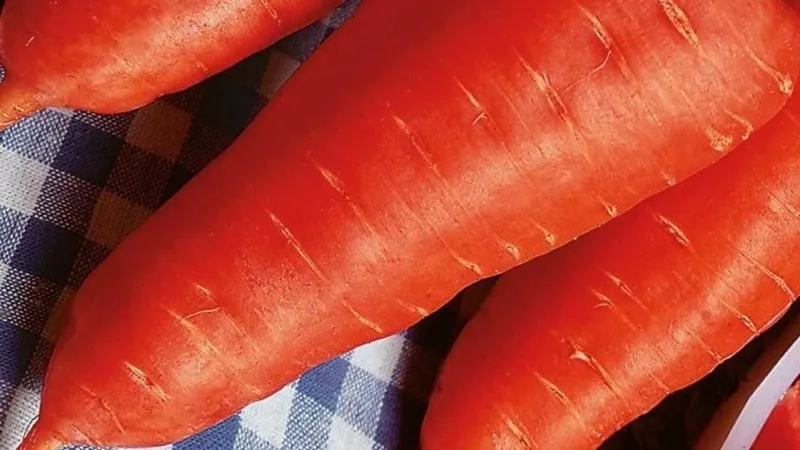
Maturation Period
Red Cor is a mid-early variety. From the first sprouts to harvest, it takes 70–75 days.
Yield
The yield is high. Regardless of soil type, 8–9 kg of carrots can be harvested per square metre. In large-scale farming, 40–45 tonnes per hectare can be achieved.
Disease Resistance
With proper soil preparation, seed treatment, and cultivation techniques, the hybrid shows high resistance to many diseases.
Characteristics, Appearance, and Taste
The roots are cone-shaped with a pointed tip. They weigh 250–300 g and are 13–17 cm long. The carrots are bright orange with uniform flesh. The core is thin, matching the flesh in colour and texture. The skin is smooth, thin, and free of side roots.
The taste is excellent. The roots are sweet, juicy, and aromatic, with no bitterness. They contain high levels of sucrose and carotene. The hybrid does not accumulate nitrates.
Growing Regions and Climate Requirements
Red Cor, like all Dutch varieties, has good winter hardiness and adapts to various climates. The hybrid is suitable for cultivation across Europe, with winter sowing recommended in colder regions and spring sowing in milder climates.
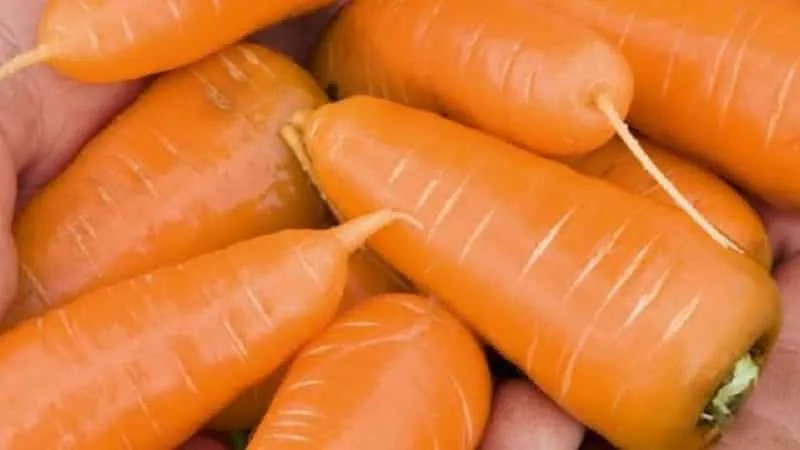
Advantages and Disadvantages
Carrot Red Cor has several advantages:
- Resistance to drought and low temperatures.
- High seed germination rate.
- Resistance to root cracking.
- Strong immunity to common carrot diseases.
- High yield.
- Good transportability and storage longevity.
- High sugar and carotene content.
- Excellent taste and versatility in use.
Disadvantages include:
- May bolt under sudden temperature fluctuations.
- Susceptible to rot if stored in excessively humid conditions.
Distinctive Features
Carrot Red Cor stands out from other varieties:
- Does not accumulate nitrates.
- Adapts to any climate.
- High fructose and carotene content.
Planting and Cultivation
The hybrid is low-maintenance but requires some care. Choosing the right planting location and crop rotation is essential.
Important! Avoid planting carrots in the same spot for consecutive years.
The crop does not tolerate waterlogging, so avoid low-lying areas where water may stagnate.
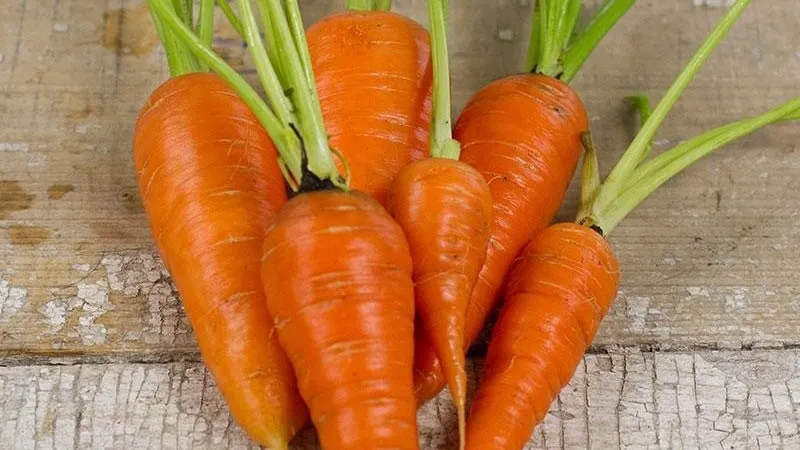
Pre-Planting Preparation
Before planting, prepare the seeds. Discard damaged seeds, soak the rest in water for 2 hours—viable seeds will sink. Then disinfect them in a Biofungicide solution for 1 hour.
Red Cor seeds have high germination rates, but pre-sprouting is recommended.
To sprout, place seeds on a damp cloth, cover, and keep in a warm place for 7–8 days, moistening periodically. Sprouted seeds are ready for planting.
Soil Requirements
The hybrid grows well in all soil types: sandy, clay, loamy, or black soil. For heavy soils, mix in sand, neutral peat, or sawdust before planting. Compact soil leads to deformed roots.
In spring, till the soil and loosen it to 23–25 cm depth before sowing. Remove clumps and stones.
Crop Rotation
Plant carrots after onions, garlic, potatoes, tomatoes, or lettuce.
Note! Avoid planting after dill, parsley, or celery.
The worst predecessor is parsley, as it encourages pest proliferation.
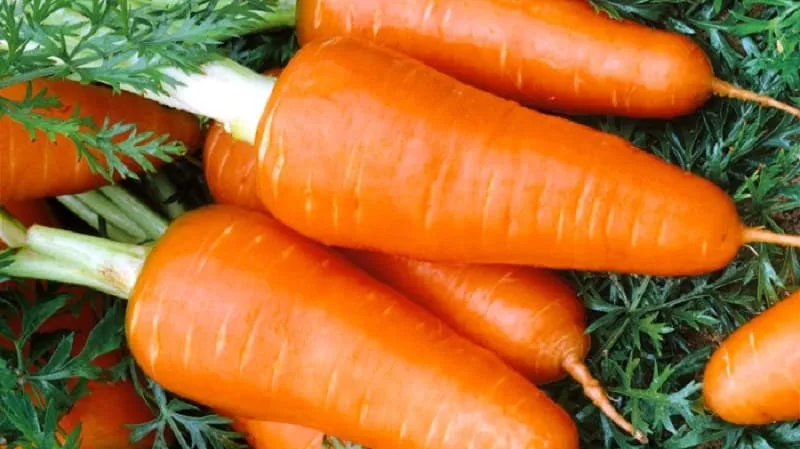
Planting Schedule, Layout, and Rules
Planting time depends on the region. In colder areas, winter sowing ensures better adaptation. In milder climates, sow in mid-spring when soil reaches +13…+15°C.
Prepare 2 cm deep furrows, water them, and space seeds 2–3 cm apart. Keep 20 cm between rows. Cover lightly with soil. Form small ridges along furrows to prevent water runoff.
Growing Conditions
Carrot Red Cor prefers sunny locations. Shaded areas reduce yield quality and quantity.
Tip. Repeated planting in the same spot weakens disease resistance.
Avoid overwatering, as it causes soil crusting.
Initial growth is slow, so weed control is crucial. Remove weeds before planting.
Loose, uniform soil prevents misshapen roots. Aeration is vital—compacted soil reduces sweetness.
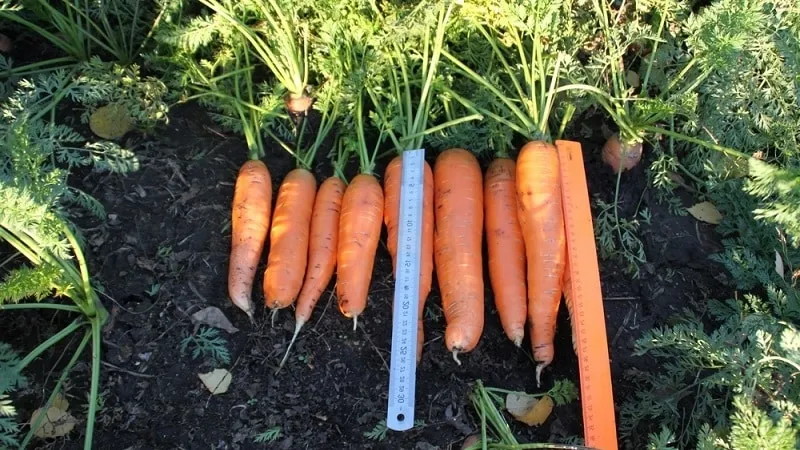
Watering Regimen
After sowing, delay watering until sprouts appear. In hot weather, water moderately. Initially, water daily, then every other day. Loosen soil between waterings.
Tip. Use sprinklers to avoid soil erosion.
When plants reach 13–15 cm, water every 3 days. Reduce frequency as they grow, eventually watering weekly (adjust for weather).
Gradually increase water volume to 13–15 L per m². Total of 8 waterings per season.
Important! Irregular watering causes root cracking.
Stop watering 2 weeks before harvest.
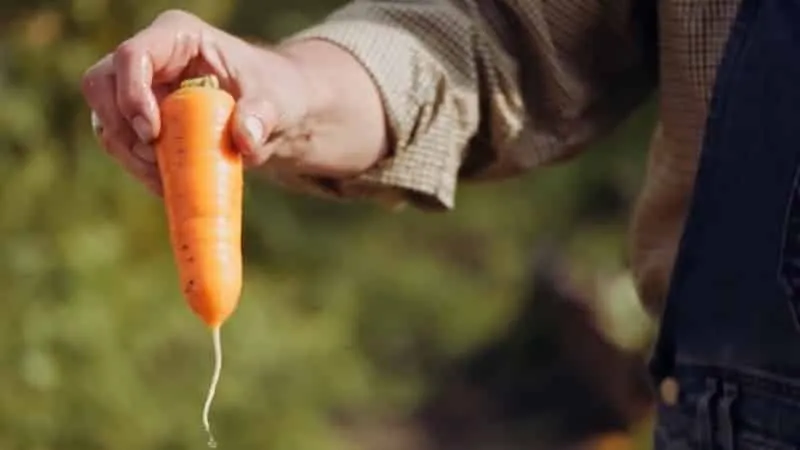
Thinning and Weed Control
Thin seedlings after 4 true leaves appear. Remove weaker plants. Repeat thinning as roots develop.
Weed regularly to prevent competition.
Fertilisation
Carrot Red Cor responds well to fertilisation without nitrate buildup. Feed 4 times at 2-week intervals.
First feeding (3 weeks after sprouting): 10 g urea + 20 g superphosphate in 10 L water. Second feeding: NPK mix (15:25:20). Third: add wood ash. Fourth: use boric acid (2 g/10 L).
Warning! Avoid fresh manure—it causes rot.
Disease and Pest Control
Phoma (dry rot) causes brown spots and hollow roots. Treat with Maxim (1:1 dilution).
White rot forms a fungal coating, making roots watery.
Black rot (Alternaria) darkens foliage, causing dry rot on roots. Use Rovral or Maxim.
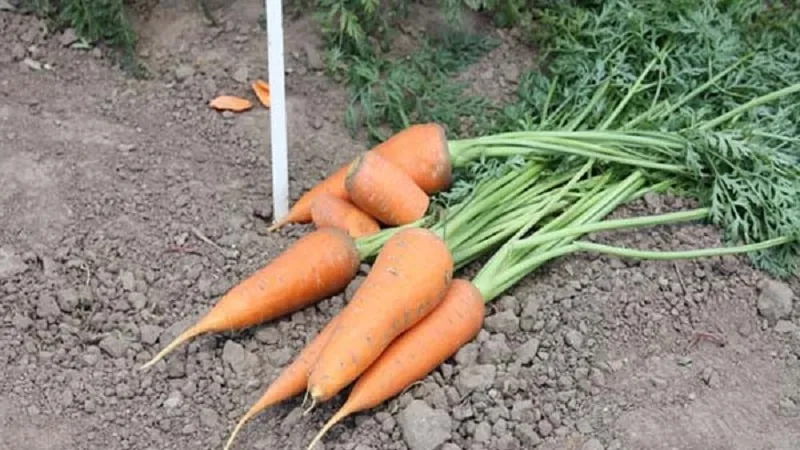
Brown spot causes rust-coloured lesions. Spray with Fungisan (2 tablets/L).
Powdery mildew is treated with Biofungicide (5 g/10 L).
Carrot fly is controlled with Karate (0.2 mL/L).
Mole crickets damage roots. Apply Basudin (1.5 g/m²).
Slugs attack foliage. Use Sluggo (3 g/m²).
Growing Challenges
Poorly loosened soil causes deformed roots.
Weeds weaken growth if not removed.
Irregular watering leads to cracking.
Harvesting and Storage
Harvest in late summer during dry weather. Stop watering 2–3 weeks beforehand. Delaying harvest makes flesh pithy. Dry before storage.
When and How to Harvest
Harvest when lower leaves yellow. Pull carrots by foliage, dry for a week, trim tops, and inspect for damage before storage.
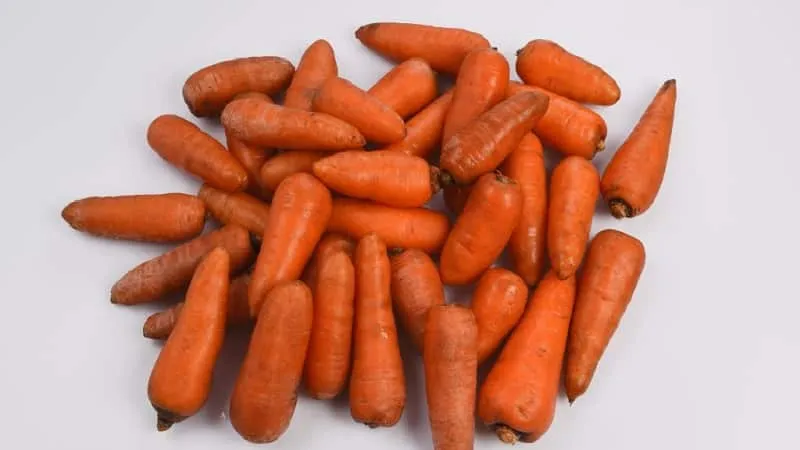
Storage and Shelf Life
Store undamaged carrots in clean, dry, ventilated conditions at 0…+4°C and 85–90% humidity. Proper storage preserves quality until spring.
Shelf life reaches 95%.
Expert Tips
Experienced growers recommend thorough drying before storage to prevent rot.
Disinfect storage areas beforehand.
Avoid soil crusting—lack of aeration reduces sweetness.
Reviews of Carrot Red Cor
Reviews are mostly positive. Farmers praise its taste, yield, and ease of cultivation.
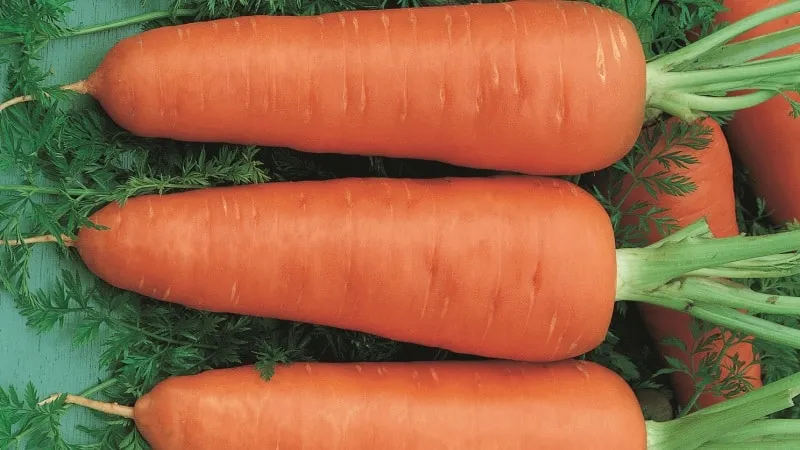
Sophie, France: “I bought Red Cor seeds based on the description. They grew effortlessly—sweet, crunchy, and uniform.”
Thomas, Germany: “Tried winter sowing. Sprouts emerged vigorously in spring. Excellent flavour.”
Luca, Italy: “A neighbour shared Red Cor seeds. Harvested smooth, crack-free carrots with great taste.”
Conclusion
Carrot hybrid Red Cor thrives in diverse soils and climates. It stores well for up to 6 months, offering sweet, juicy roots. These qualities make it a favourite among home gardeners and commercial farmers alike.







